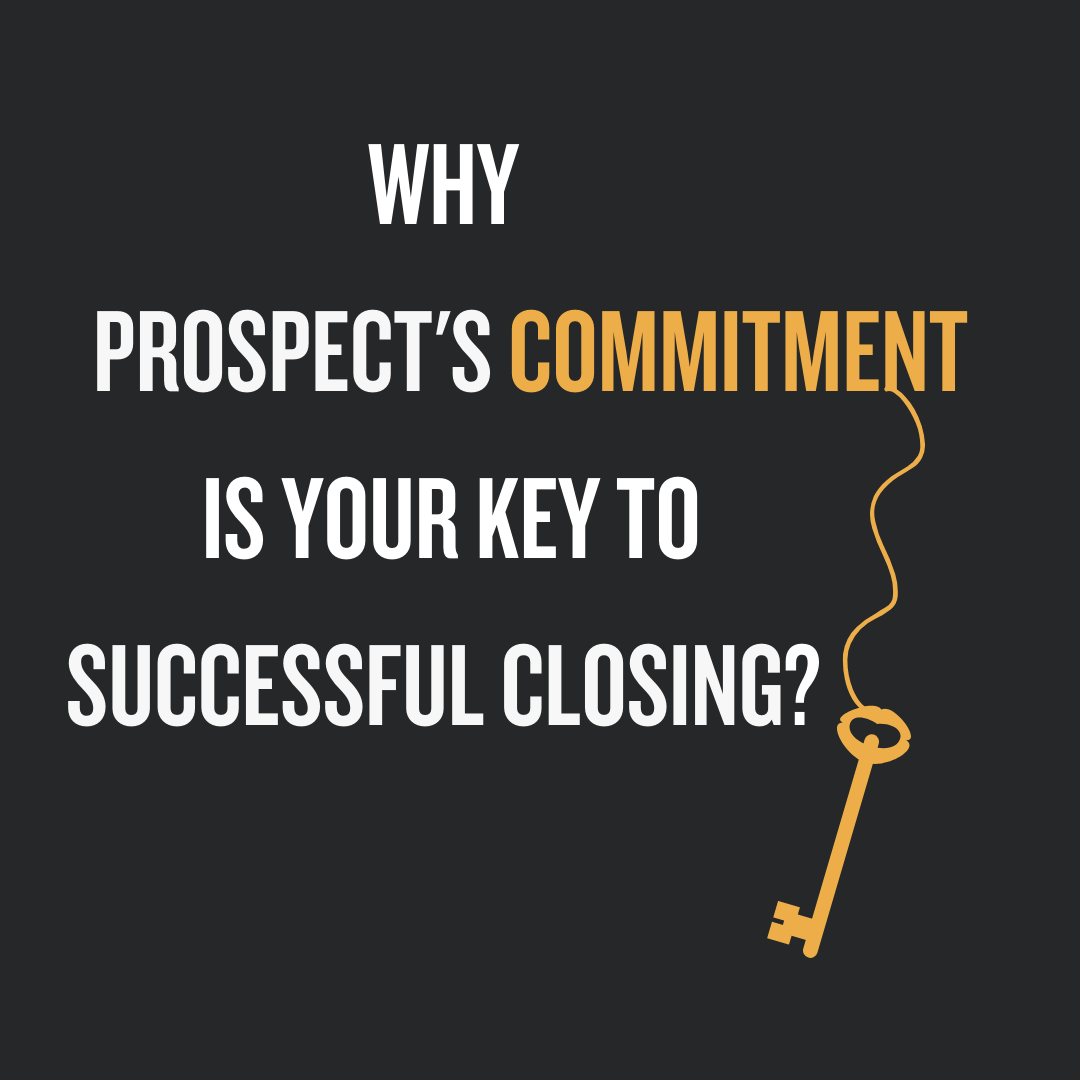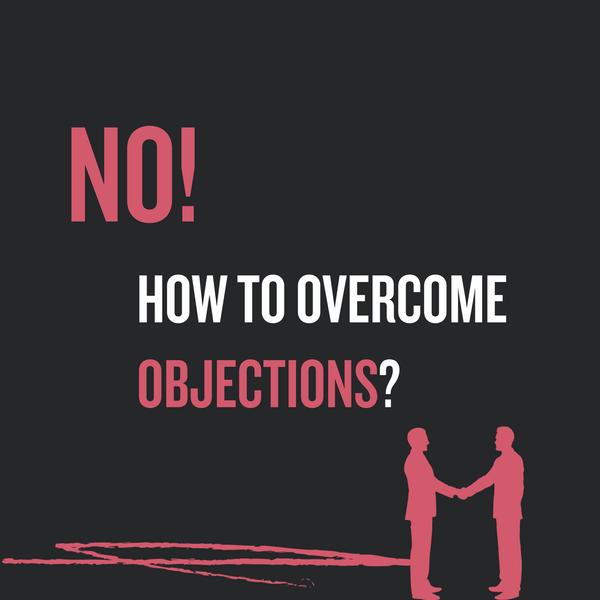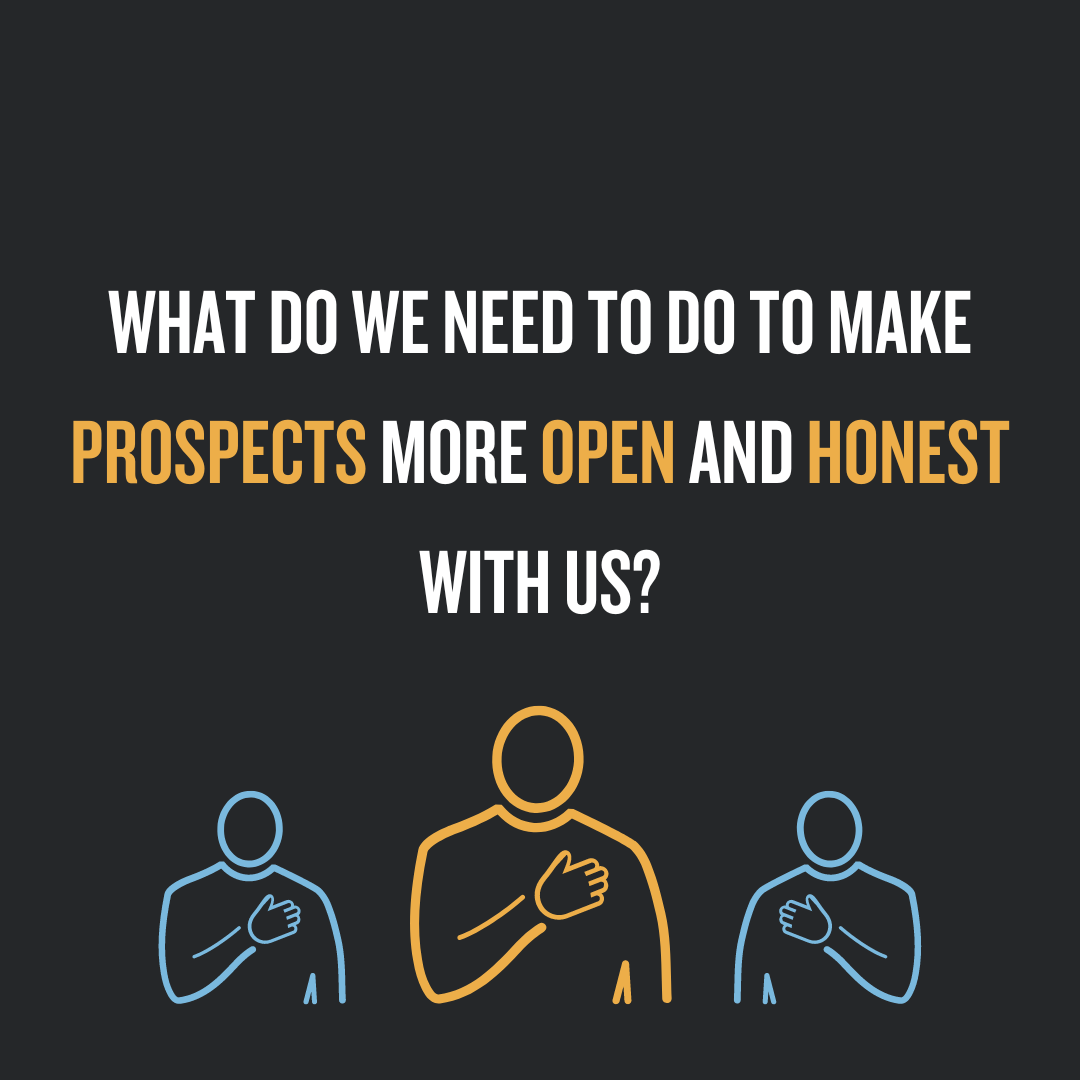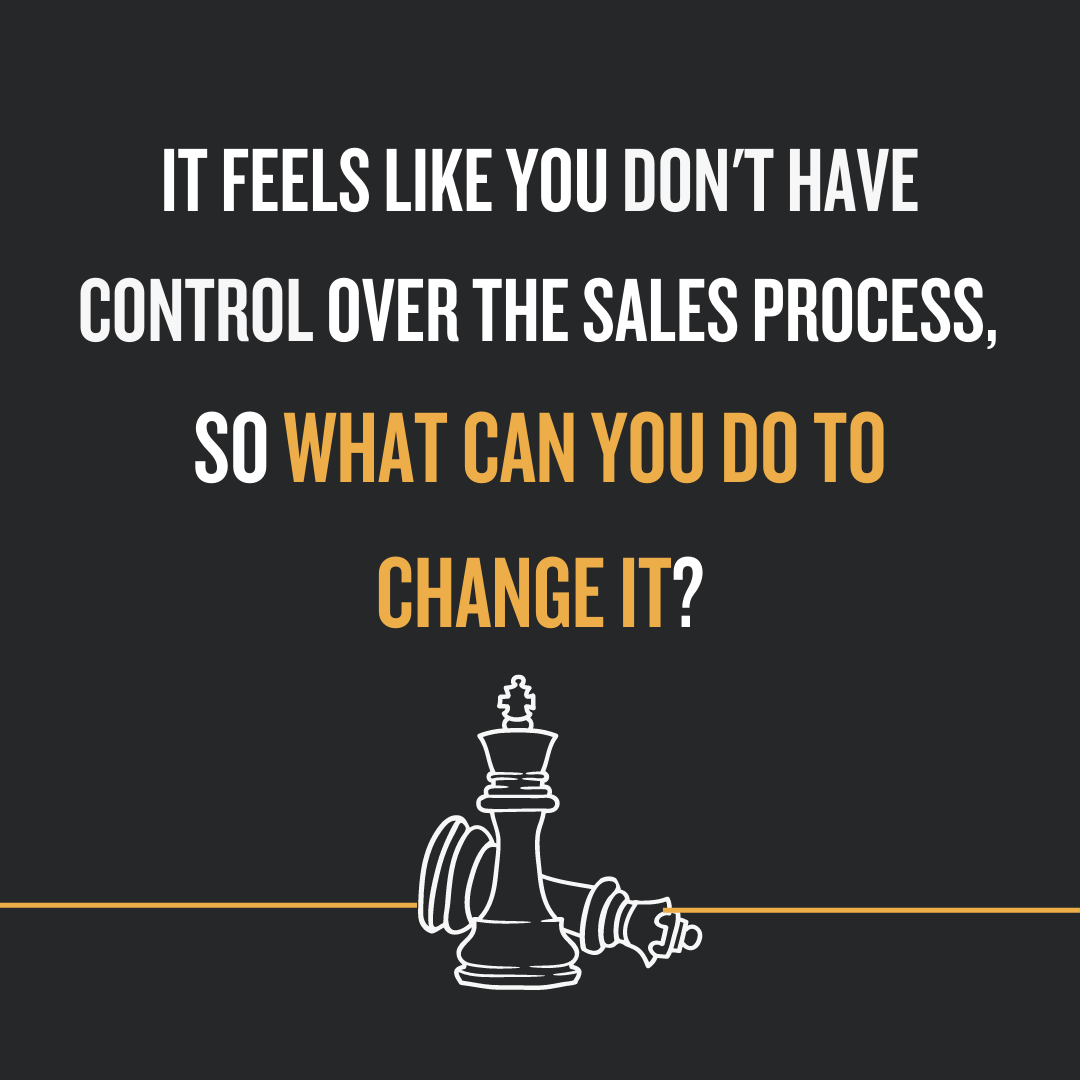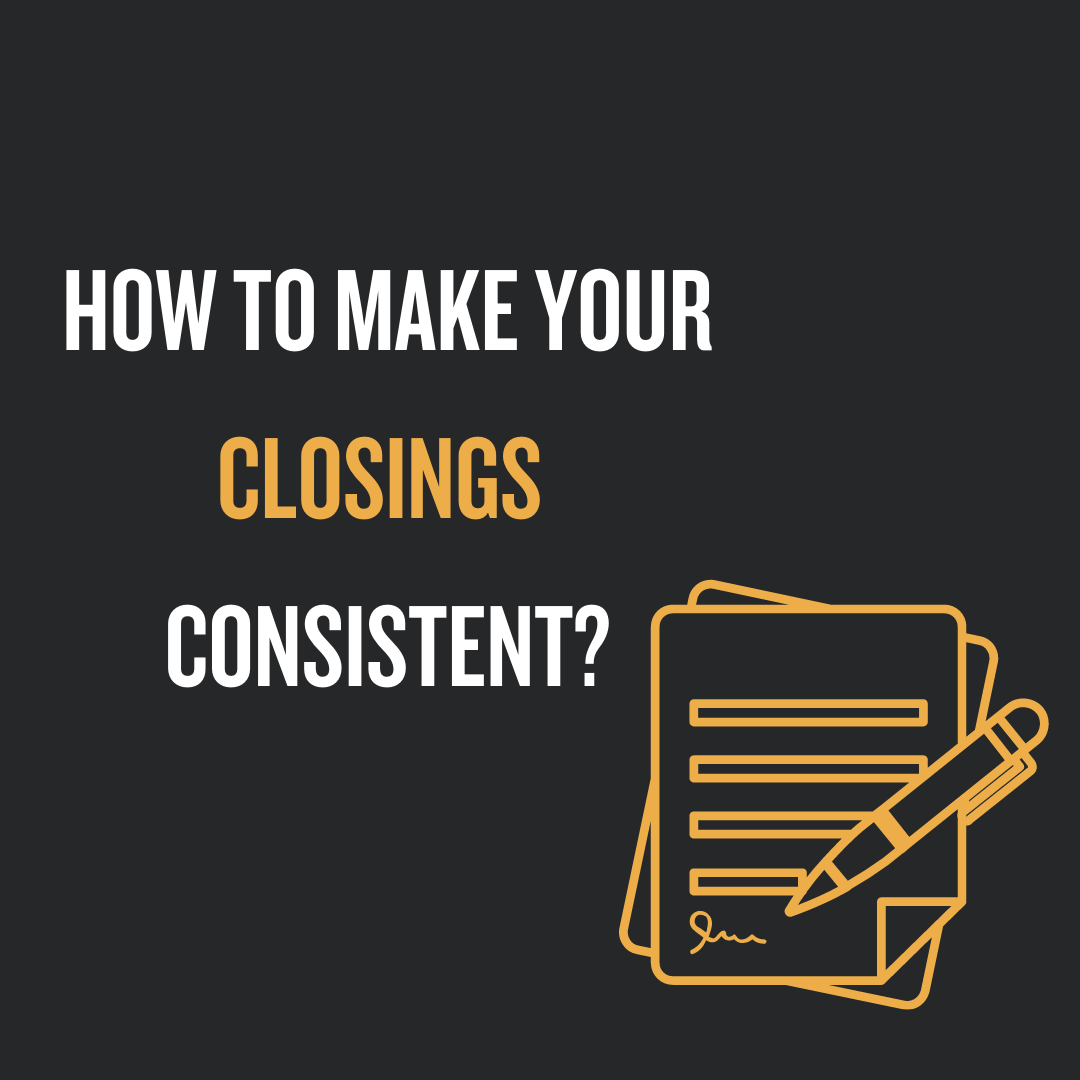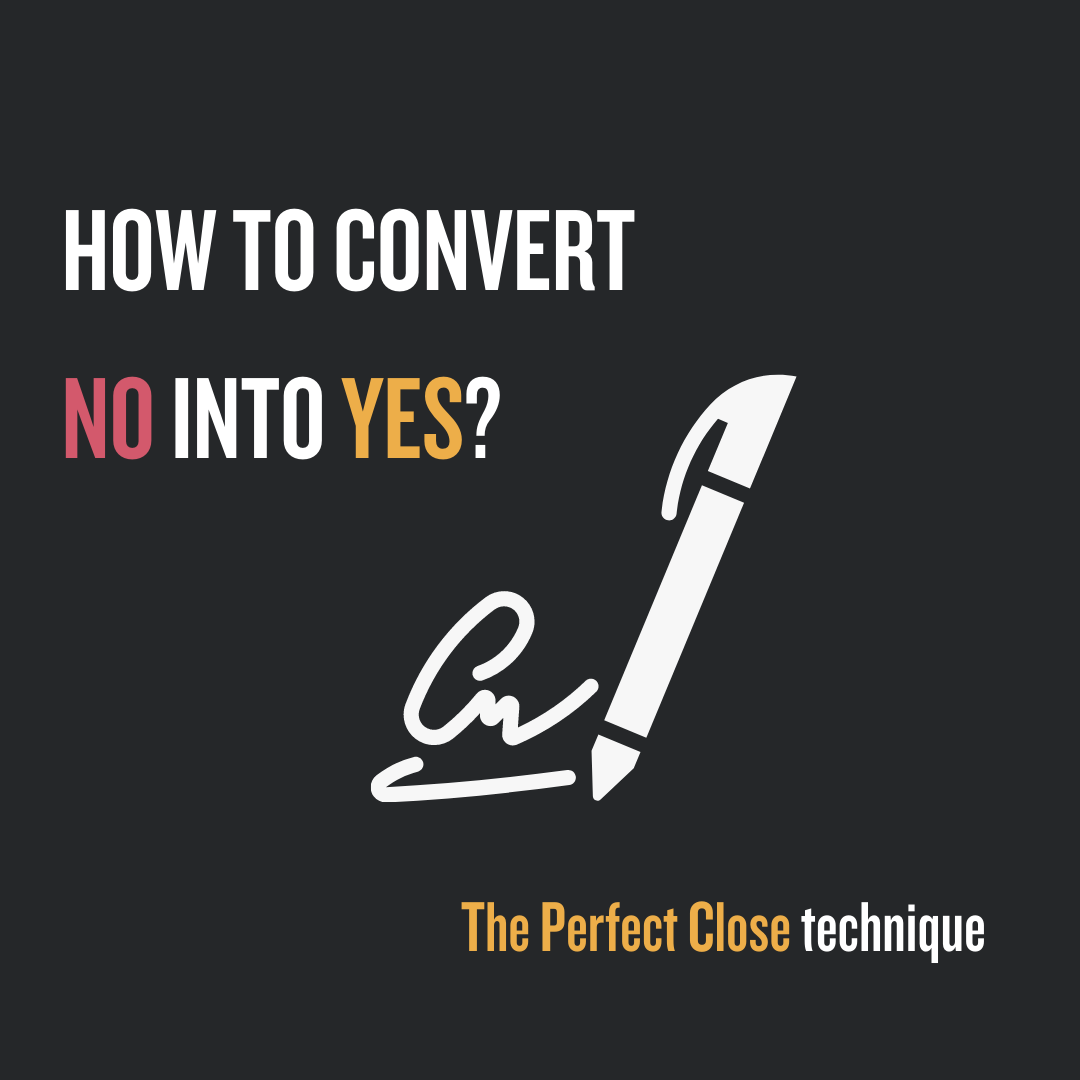Previously, I already covered the true meaning behind advancing in the sales process here. But I haven’t explicitly talked about what you can do, to get those advances from your prospective client.
So, in this article, we’ll talk more about what you want your prospect to do and how you can make this actually work.
As I mentioned before, an advance is something your prospect does, that requires some action and energy from them. But what makes this topic more complex is that we have different kinds of advances and all of them require your attention. In this article, though, I'll explain the term ideal advance and how it's the key to your closing.
So, an ideal advance is the highest level of commitment you can reasonably expect your prospect to make as a result of this encounter.
Complex sales work like a flywheel. The more times we get an advance from a prospect, the faster it will go. Some sales require many advances while others just need a few. If you brainstorm and plan ahead, you can choose the best advance for your interaction and be prepared with alternatives in case our primary goal proves to be unrealistic.
You should aim for the biggest commitment you can get from your prospect during this encounter. Each successful advance will add momentum to your sale and bring your client closer to their goal.
Granting this commitment isn't easy, but 4 main rules will help you build a strong background to support you during your sales process.
Worksheets are available to download later below.
RULE #1: Your objectives should meet all of the criteria
In one of my previous articles in this series, I talked more in-depth about objectives and how to set them, so feel free to check it here. But let's go briefly here and figure out what are those main criteria for your sales goal before the meeting:
1) Your objective should be specific and measurable - Your call objectives should be as specific and measurable as your sales objectives. This way, it will be easier to see if the action occurred or not. It is simpler to measure an action than it is to measure a change in attitude or feeling. As you come up with new ideas, ask yourself: "What actions might show a change (or confirmation) of attitude or feeling?"
2) Your prospect should be active and become the center of your objective - The goal of an objective is to help people do things that we want them to do. As you think of all the possibilities, keep in mind what customers might do as a result of meeting with you. Consider, "What can my prospect do to help move the deal forward?"
3) Move the sale forward - Every step in the sales process should move the sale closer to being finished. Sometimes there are many steps, and sometimes there are only a few. The key is that each step should add some momentum to the sale. At the same time, not everything the prospect does will move the sale forward. Meetings, for example, don't do anything to make or break a sale. They are neutral. The meeting may help you close the sale, but it is merely a chance in and of itself (unless the prospect puts forth a lot of effort).
4) Be reasonable from the prospect’s perspective - You also want to make sure that your objectives for each call match where the prospect is in the buyer's journey. For example, you probably won't be able to schedule a site visit to a plant on another continent before you discuss your initial value proposition with the prospect. This is because the prospect isn't ready for that yet.
RULE #2: Understand the difference between Advances and Engagement
There are a number of interactions with a possible client that are positive, but they don't necessarily mean that the client is committed to buying your product or service.
You need to be careful because some of these positive interactions might not be strong enough to actually count as an advance. So here, you need to understand the difference between an advance and a so-called engagement.
An engagement means that the client is interested in your product or service and is willing to learn more about it. And here, sales engagement is an interest that does not involve seriousness towards a possible purchase.
An advance is when a client commits or agrees to do something. But there are also times when clients show seriousness for a purchase without any commitment. This can be shown through their actions.
One way to think about engagement and advances is to consider them on a scale. On one end, you have things that are interesting but not important enough to invest time and energy in. On the other end, you have things that are important enough to take action on.
Many professionals waste a lot of time on potential business deals that won't go through because they mistake people's curiosity or politeness as good indicators of seriousness for a sale.
Let's explore some of the most common indicators of engagement, that you can mistake as advances:
- Prospect asks you for a proposal.
This is, without a doubt, the most frequent engagement mistake. Prospects are intrigued and want to know how much something will cost. The issue with asking for the price is that it doesn't need any effort or commitment from the prospect, making it an easy question for them to ask.
I strongly advise against offering them a proposal unless they request one. If you suggest that someone give you a proposal, they usually won't say no. But if you wait and let them ask, you will learn more about their interests. If you offer it first, then you will know nothing because even uninterested prospects are curious enough to want to know the price.
If you can, try to upgrade the prospect's request to an advance. This means that they need to do something logical that represents a commitment or an expenditure of energy, like taking an assessment or doing a detailed discovery. Once they do this, then you can produce the proposal.
- Prospect asks questions regarding the proposal or solution.
It's a good indication of engagement if they ask specific, detailed questions about the offer or solution. You may often tell how interested they are and how much energy they have spent in the research they've done before your meeting by the quality of their queries. However, interest is not enough to constitute a commitment. Use the information you gain from their inquiries to propose a logical development that will advance the procedure gradually while also testing their devotion to it.
- Sending a proposal.
Sending a proposal is not the same as making an advance. It might be a step in the process, but it's definitely not an advance. The biggest mistake people make when selling is to email a proposal to a potential customer without agreeing on the key details first. Or even worse, without first scheduling a call to go over the proposal after you sent it via email.
After the prospect has received your proposal, they may determine that they have received all of the value you can provide and will only contact you on their terms. Especially, if you are not adding value or offering insight in each encounter.
So, here, instead of emailing or delivering your offer, set up a meeting to go through it with them.
- Read or study a copy of your presentation or supporting material.
It's a positive indicator of serious attention and perhaps an advance when a prospect invests considerable time and effort in analyzing your presentation or supporting material.
If you can tell by their questions and comments that they've really studied your materials, that means the prospect has shown interest. However, it is far more common for prospects to ask for these papers (or simply accept them if you propose to send them) than to do anything with them.
The ideal approach is to transform their enthusiasm into a meeting or discussion, and then propose a logical advance as a consequence.
- One of their personnel contacts you to gather additional information (IT, engineers, managers, supervisors).
If a member of your potential client's staff contacts you out of the blue to get further information, you should be encouraged. Because this person is already putting in an effort by phoning you. Chances are that there was an advance internally without you knowing about it. But here is the problem, you're not sure how committed this person is.
The ideal strategy in this situation would be to talk with the person about their responsibilities in the process, their feelings about the project, and any potential conflicts that might emerge as a result of the decision. Their responses will usually reveal whether they are friendly or hostile if you understand what to look for in terms of context.
If you want to convert this interaction into a next advance, be super helpful and make the other person commit to something. This could be gathering agenda items for a group meeting, reference client visits, etc.
- Request help in explaining an area related to the sale to another person.
When a prospect asks for coaching on how to sell your product to their superiors, for example, it's a positive thing. This is an engagement that suggests there may be more ahead. The ideal way to go about this is to have a discussion with your prospect first and figure out what they're trying to accomplish. Scheduling a call between you and their superior can be considered an advance.
- Attend a webinar or watch an online demo on your website.
These are things people do to get information about something. They may not be very interested, or they may be trying to find out information to use against you. If this happens near the end of your sale, it may mean that the person is not as far along in the buying process as you thought.
The ideal approach is to contact the individual who carried out these measures and continue the discussion. Learn everything you can about the situation, including the dynamics, and then propose one of your advances.
- Refers another prospective client to you.
In most cases, this indicates a very strong, positive level of involvement. If they've already spoken with the potential referral, you have an advance. Congratulations!
But if they're just tossing out a possible prospect's name without any explanation, though, you'll need to go further. Find out more about their connection with the referral and why they're making the suggestion. Then, if at all possible, improve this engagement to an advance by asking if they'd be willing on behalf of you to make an introduction for someone else.
Understanding the difference between an advance and an engagement is crucial to maintaining momentum in your opportunities. But now, you've learned how to avoid making the following most typical engagements look like advancements, so let's move further.
RULE #3: Always Brainstorm And Plan Ahead
There is no one perfect way to sell a product. What works in one situation might not work in another. It's a good sign when you are tailoring your sales advances to fit the specific needs of a prospect. That means you are really thinking about what they want and trying to give them what they need.
Using the template below you can try out the brainstorming exercise created by James Muir in his book "The Perfect Close".
Step 1 -In the Possible Advance/Client Action column, work together to come up with all of your prospects' potential activities. For now, ignore the columns to the right and simply collect as many ideas as possible.
Step 2 - Review your ideas. Then, in the Measured by? column, discuss and write down how you will know when this action has taken place. This will help you discern advances from engagement or mere feelings.
Step 3 - Discuss and rate how beneficial this advance would be to your sales development under the Impact column. Rate them as High, Medium, Low, or None. This can assist you in determining which of your advances are most desirable.
Step 4 - For the Achievability/Reasonable column, rate each advance on a 1-to-5 scale (1=very difficult; 5=easy to accomplish) as a group. This process will aid you in determining how realistic each development is from your client's perspective. For now, we'll stick to the broad strokes
Step 5 -If you were planning a meeting, you would prioritize each advance and list them by priority in your encounter plan. But for now, we are brainstorming, so leave the Best Choice/Priority column blank.

The greatest salespeople can get prospects to agree to a continuous stream of little activities. This raises the chances that each encounter will result in one or more advances.
RULE #4: Strengthen Your Advances
Now, knowing the concept itself, you can make your advances even more effective by making a few small changes. So, let's strengthen your advances together:
- Make your interaction as direct and personal as possible.
Just because something is efficient, doesn't mean it is effective. With the internet, there are many ways to interact with your prospects and clients that don't involve face-to-face contact (like email, chat, internet presentations, phone calls, etc.). Сommunication, understanding, and the development of relationships are all better when done in person, or at the least over a video call.
You can't see people's facial expressions when you're on a phone call. But if you can meet with your prospects in person (or on a video call), you will be able to understand them better and they will understand you better too.
- Add valuable people to your meeting.
The participation of key personnel from your company and the prospect's firm can enhance your meeting (which, in and of itself, may be beneficial) as well as the action items and advances that result from it. Depending on the current stage of the prospect's buying journey and the agenda of the meeting, this might include important decision-makers, technical experts, domain specialists, or even existing clients.
- Add value to every interaction.
Adding value is one of the keys to your close. I talked about it more in my previous article here, so feel free to check it out. But to sum it up: Do your best to strengthen every encounter by adding value in some way. By making each encounter worthwhile, you teach your prospects and clients to treasure every interaction with you.


